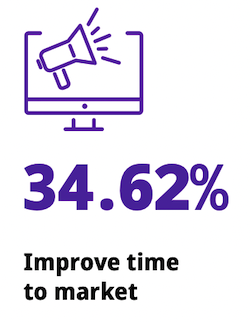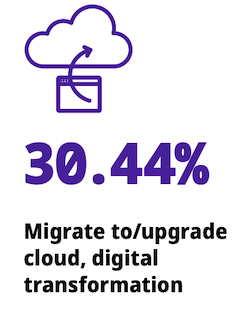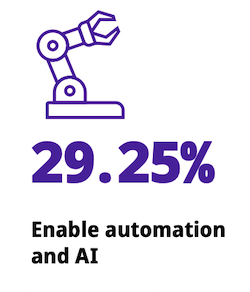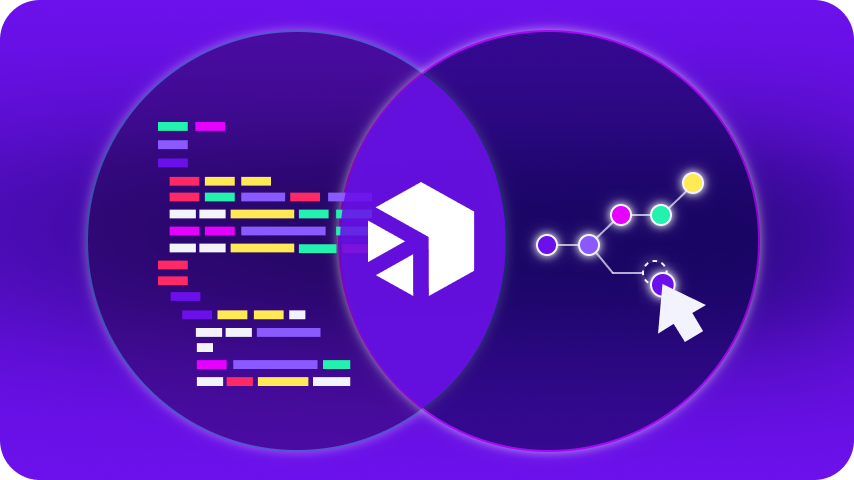June 1, 2023
The Digibee 2023 State of Enterprise Integration survey, was carried out earlier this year, compiling input and opinions from one thousand CTOs, CIOs, system architects, and web developers in North America.
The survey data provides compelling insights to the state of integration across multiple industries. In this blog post we explore some of the findings specific to Retail, one of three industry sub-reports we published.
One distinct and very interesting insight is the “why” behind enterprise integration. Based on responses from Retailers, the highest-value objectives for integration rank as follows:
- Improve time to market
- Migrate to/upgrade cloud, digital transformation
- Enable automation and AI
One theme ties these three objectives together: Proactive investment in innovation to better compete. It’s clear that retailers can’t afford to be complacent in today’s changing landscape. And while integration hasn’t traditionally been viewed as a strategic technology, the truly insightful leaders see how integration can help enable key innovation. This insight is reflected in these objectives.
Let’s dig into the data.
1. Improve Time to Market
Almost 35% of respondents rank time to market as the top enterprise integration objective for Retail. This makes sense when you consider the significant upside to the business, including greater market share, increased revenue, and a meaningful leg up on the competition.
 When a retailer is able to reduce time to market, the business is rewarded with more selling days. Especially important within the e-commerce use case, where customers shopping online expect to find the newest products and services at their fingertips. And when they don’t, it’s an easy hop to the next online retailer.
When a retailer is able to reduce time to market, the business is rewarded with more selling days. Especially important within the e-commerce use case, where customers shopping online expect to find the newest products and services at their fingertips. And when they don’t, it’s an easy hop to the next online retailer.
But being first to market is only half of the equation. The product or service you deliver to your customers is also key. Accurate data analytics – especially real-time data – are critical in allowing you to meet (and even beat) customer expectations, with businesses achieving up to 70% in market share as the first to market with a new product.
Improving time to market in retail is all about greater efficiencies throughout the organization. Optimized supply chains, real-time data analytics, and e-commerce integration with adjacent software applications and systems. Retail digital transformation is essential to all of these advances, and enterprise integration is the foundation upon which it is built.

Without a truly connected environment, retailers lack the insights to understand what’s working, where improvements are needed–and most importantly–to gauge in real-time the quality of the customer experiences they deliver.
The State of Enterprise Integration for Retail Report 2023
2. The Cloud & Digital Transformation
At number two on the integration objectives list for Retailers is cloud/digital transformation.
 Given the speed of innovation within retail, this is not a surprising result. In recent years, we’ve seen the rapid adoption of some amazing technologies, for example, digital and curated shopping, automated checkouts, and enhancements in how retail inventory systems are managed and optimized. Digital transformation – and especially the cloud – have enabled all of these advances.
Given the speed of innovation within retail, this is not a surprising result. In recent years, we’ve seen the rapid adoption of some amazing technologies, for example, digital and curated shopping, automated checkouts, and enhancements in how retail inventory systems are managed and optimized. Digital transformation – and especially the cloud – have enabled all of these advances.
Today, the retail cloud market in North America is expected to grow at an astounding CAGR of 4.56%, for a valuation of $109.98 billion USD from 2023-2030.
With so much opportunity, it’s no surprise companies are hopping on the retail digital transformation bus in record numbers, with most aiming to elevate the customer experience (CX) they deliver. No longer a nice-to-have, a personalized and omnichannel CX is table stakes for most retailers.
In order to evolve, retailers must shift to a composable technology stack, allowing them to rapidly adapt and adopt new technologies as needed, a non-starter with traditional monolithic retail platforms.
Enterprise integration connects the old with the new, knitting together all of the different systems and applications in the retail stack, supporting agility and flexibility in an industry where change is constant.
3. Enable Automation and AI
Retailers ranked automation and AI number three on their integration objectives list, a natural evolution once the cloud and digital transformation initiatives are in place.
 The prioritization of AI is reflected in the global retail market numbers where retail market size is expected to reach about $45.74 billion USD by 2032, growing at an estimated CAGR of 18.45% from 2023 to 2032.
The prioritization of AI is reflected in the global retail market numbers where retail market size is expected to reach about $45.74 billion USD by 2032, growing at an estimated CAGR of 18.45% from 2023 to 2032.
When you consider the volumes of data generated by digital e-commerce, AI is an imperative. With AI, retailers are able to organize and examine data in real-time from a range of sources (e-commerce data, retail ERP systems, marketplace, customer, and competitor information, etc.)
The results speak for themselves. Data insights that support amazingly accurate demand forecasting for improved inventory management; the detection of early-stage changes in market and consumer behaviors; and, since all roads lead back to the CX, real-time data that optimizes customer interactions.
AI is helping retailers build interactive systems that streamline customer communication throughout the buying journey. This improves the quality of customer personalization and engagement.
Forbes
The Future of Retail: Four Ways For The Industry to Utilize AI
Real-time access to accurate customer profile and order history, e-commerce chatbots, tracking of e- and in-store activities, an improved check-out experience, and even product placement are made better with AI.
AI also enables automation, a valuable capability that delivers meaningful benefits across the retail operation. All of the advances noted in the preceding digital transformation section previously fell to humans, making for time-consuming and often error-ridden work. AI frees workers from these mundane tasks while increasing accuracy and speed.
Achieve Your Business Objectives with Digibee’s iPaaS
Digibee’s low-code, cloud-native integration platform as a service (iPaaS) technology enables you to connect all of the dots (and IT infrastructure) to help you achieve your digital transformation objectives.
Download your complimentary copy of the Digibee 2023 State of Enterprise Integration for Retail sub-report today for a deep dive into all of the data. Understand how your peers are progressing and examine year-over-year trends and observations to inform your integration strategy.













